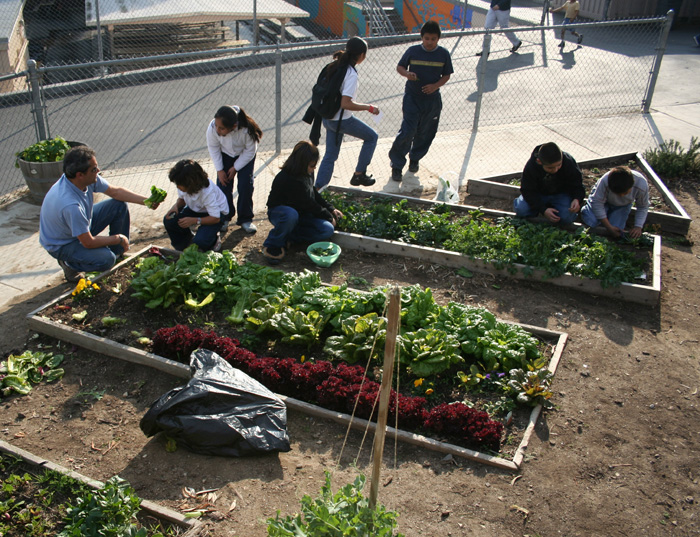In America, more than one third of US adults have obesity as well as one in six children.
The cause and the blame can be researched and debated till the cows come home and still we’ll be in the same place as we are right now. What are we going to do about it?

One approach is to teach nutritional education through school gardens at the elementary, middle, and high school levels.
Human and plant nutrition are inextricably linked, we share many of the same essential elements. The more we understand plant nutrition the more we will understand human nutrition and vice versa.
As an example, think about Nitrogen. It is a colorless, odorless tasteless gas. It makes up 4/5 of the earths atmosphere and is present in every cell of every living thing: humans, plants, animals, fishes, insects, fungi, algae, bacteria and viruses. It is one of the ways we are all connected.
In humans we ingest it as proteins. Of all the essential nutrients we need on a daily basis by weight, protein is among the highest. When proteins are digested we absorb it into our body systems as amino acids. One of the main building blocks of amino acids is nitrogen.
With plants, nitrogen is absorbed from the soil facilitated by specialized bacteria that transforms nitrogen from the atmosphere into a usable form for plants. Of all the essential nutrients plants need on a daily basis, nitrogen is also among the highest.
While proper nutrients are essential for optimum growth in both plants and humans, too much nutrients can also be very detrimental.
Please consider the following experiment with your students using 3 containers or raised beds-
In bed 1 plant broccoli, beets, carrots, and radishes without any nutritional supplements.
In bed 2 amend the soil with organic matter, plant the same vegetables and feed once a week with an all-purpose organic fertilizer following suggested amounts.
In bed 3 amend the soil as in bed 2, plant the same vegetables, and use the same all-purpose fertilizer. However in this bed increase the feeding schedule to three times a week and triple the suggested amounts.
Question: Can more nutrients equal better health? What do you think? Take a vote at the start of the exercise.
The results should be that in bed 2 there are bigger heads of broccoli, longer carrots and larger beets and radishes than bed 1. Conclusion: Proper nutrition is better than insufficient nutrition.
In bed 3 all the plants have died from too much fertilizer. Conclusion: Overfeeding with nutrients is worse than underfeeding.
Lessons learned:
1. When plants receive the proper nutrition they grow bigger and stronger and are more resistant to pests and disease.
2. Under feeding grows weaker smaller plants while over feeding is deadly.
How can we relate it this to human nutrition? The lessons and the conclusions are the same.
If you decide to undertake this experiment please keep a journal (for scientific reasons) and report back. We would love to know your results.

